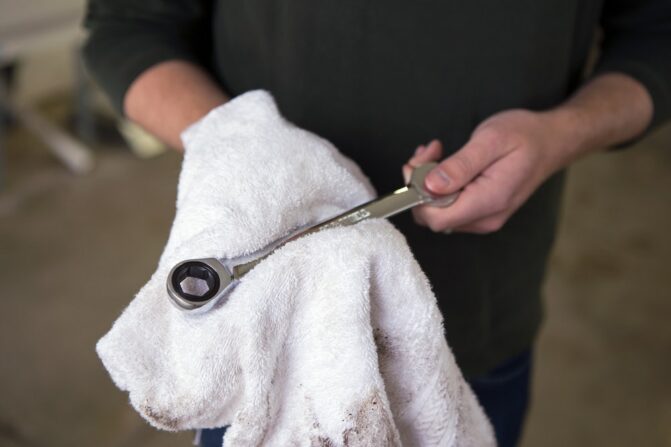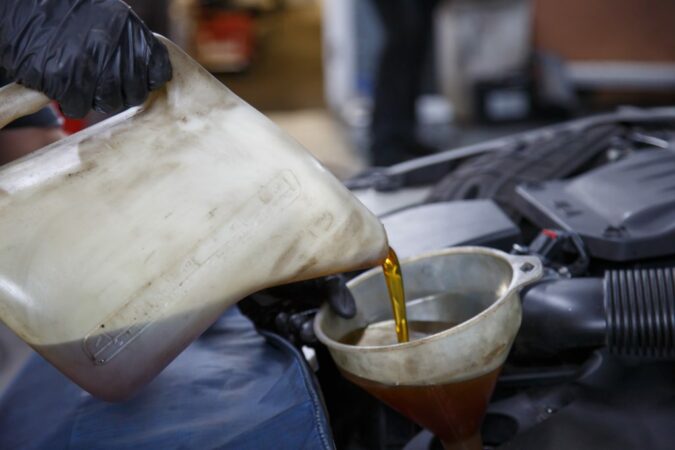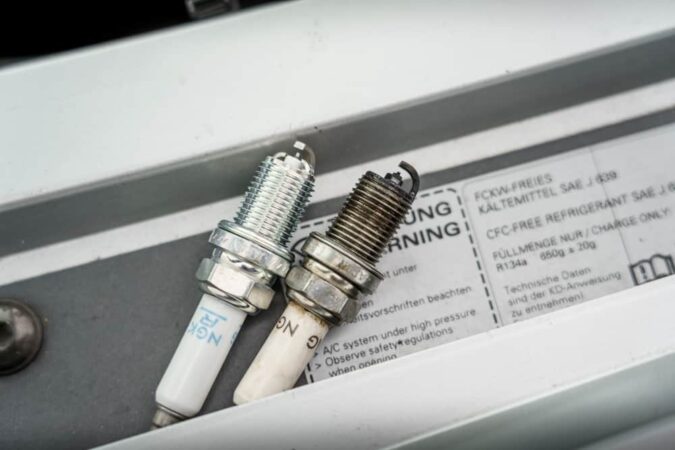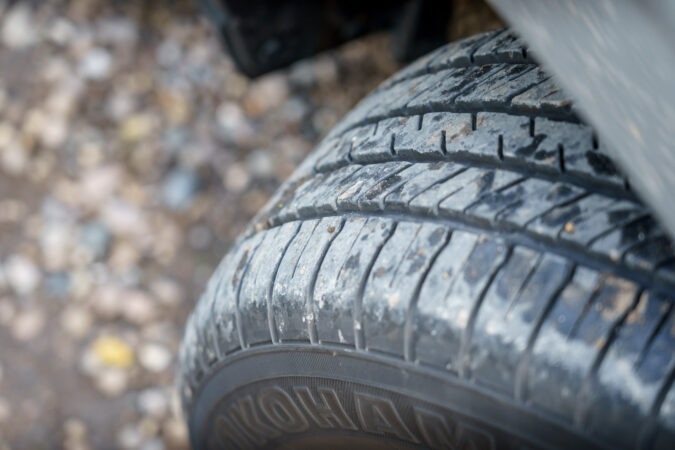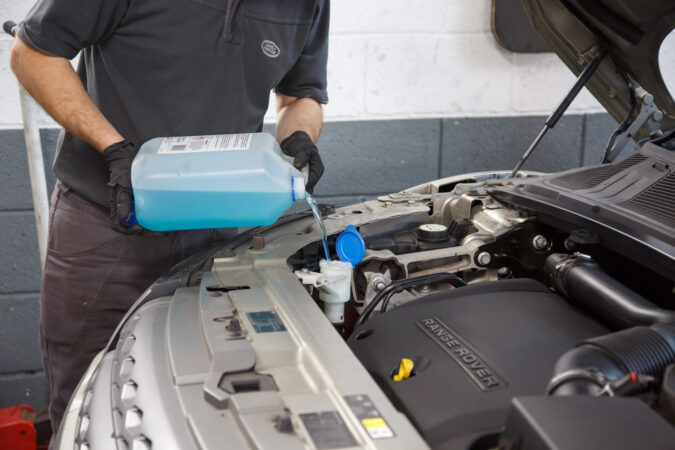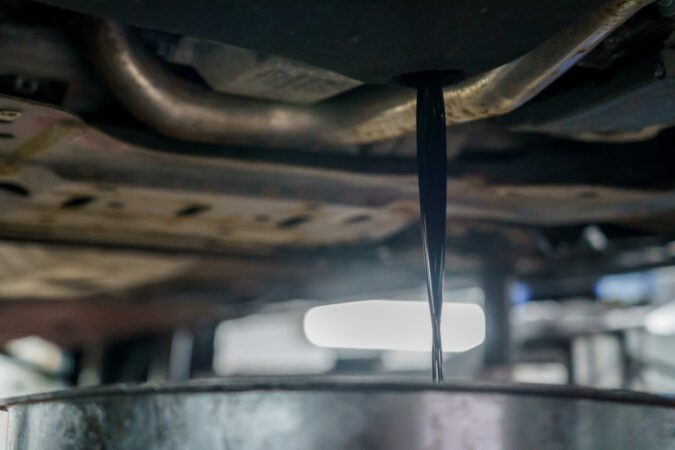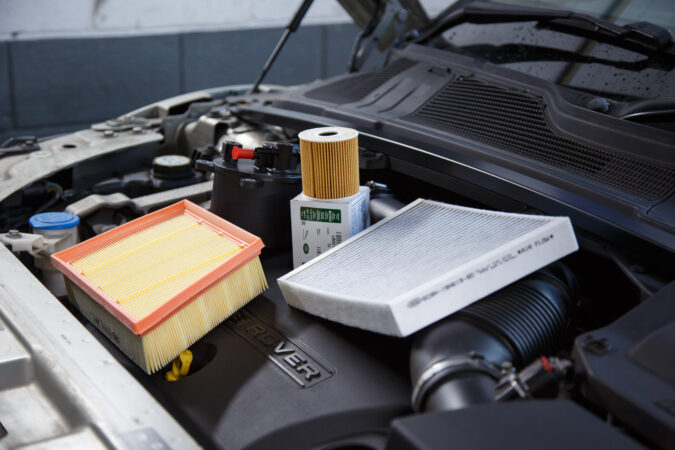While cars are a big part of our lives, sometimes we just don’t have the time to understand their inner workings. And to be honest, between work, taking care of a family, socializing with friends, and enjoying your hobbies, understanding how your car works are hardly going to be a priority. Hence, our edition of Cars for Dummies…
Frankly, even as a car enthusiast, I only started understanding how cars work in the last six years or so. Before that, I was completely clueless. But I’m here to help you. In our cars for dummies guide, we’ll explain briefly how cars work and all the basic maintenance you should know about.
Understanding your car and how to properly maintain them will go a long way. You can keep them running and running well for a long time. Let’s start with how cars work.
How Cars Work
First up in our cars for dummies guide is how the car itself works. Cars are incredibly complicated, so we’ll try to keep it simple here. Most of the routine maintenance you’ll have to do will be engine-related, so we’ll focus on that.
Car engines work by combusting fuel and air mixture with the help of a spark from the spark plugs. Your engine will start by inserting fuel and air into the cylinders. The piston inside the cylinder will move down during this stage.
Then, the piston will move back up to compress the mixture. Once the piston is up, the spark plug will produce a spark to combust the mixture. This moves the piston back down and then it will move back up to get rid of the exhaust gases from the cylinder.
These small explosions move the engine’s piston up and down, and your engine will transfer this energy into your car’s transmission. The transmission will then power the driveshaft and ultimately your car’s wheels to move the car along. Here’s a video to help you understand how the engine works:
Basic Car Maintenance
As we’re sure you know, cars require regular service every few thousand miles to keep them in top shape. Usually somewhere between every 3,000 miles or 10,000 miles. But what exactly does the maintenance requires? Are there any other parts you should service as well? Well, here is the basic maintenance you need to do:
Cars For Dummies, Maintenance Tips #1: Engine Oil Change
An engine oil change is the most basic car maintenance there is. Your car’s engine experiences a lot of friction and heat during operation, and it needs oil to lubricate the parts to prevent damage. Oil also helps to keep your engine cool as it reduces friction, but that’s mostly the job of your engine’s coolant, more on that later.
Over time, your engine oil will get dirty and will lose lubricity. This makes them inefficient and could possibly be damaging to your engine. That is why you need an oil change. But how often should you do it?
You can find this in your owner’s manual. It will state just how often you should change your oil. However, the most common figures are every 3,000 miles, 7,500 miles, and 10,000 miles. Some cars with synthetic oil may be able to go as far as 15,000 miles without a service, but this is quite rare.
In any case, do not neglect this. Even though this is the most basic maintenance, it’s actually one of the most important. If you don’t change your oil, over time the oil can turn into sludge. At this point, oil won’t draw in heat nor lubricate the engine, eventually leading to severe damage to the engine.
You can also find out what type of oil your engine requires in the owner’s manual. Be sure to use the correct type as incorrect oil can affect performance and reliability. On average, it should cost around $50 – $75 for an oil change. If your car uses synthetic oil, then you will need to shell out around $70 – $125.
Cars For Dummies, Maintenance Tips #2: Engine Oil Filter Change
Your car also has an engine oil filter. As the name suggests, the oil filter will filter out dirt, debris, and metal fragments from your engine oil so that they won’t get circulated into the engine.
Without the oil filter, the engine can’t filter dirt out and it can damage your engine in the long run. Like any other filter, it will eventually get dirty and needs replacing. So, how often should you do it?
Well, like the oil change, you can consult your owner’s manual. Your owner’s manual will have almost every information that you need about your car, including when to change the oil filter.
But typically you will need to replace them either with every oil change, or every other oil change. That is, if you don’t replace the filter during one oil change, you will need to replace them on the next one. Again, consult with your manual to find out for sure, but changing them every other oil change is a safe bet.
Oil filters themselves are quite cheap, they should cost no more than $20 to purchase.
Cars For Dummies, Maintenance Tips #3: When To Change Your Spark Plugs
Next on our cars for dummies guide are the spark plugs. As mentioned, spark plugs create a spark at their tip to combust the fuel and air mixture inside your engine’s cylinders. This results in an explosion that moves the pistons which ultimately powers your car.
Over time, the spark plugs will lose the ability to create a spark and you will need to change them. However, if you have a diesel engine, you won’t have to worry about this. Diesel engines have higher compression and the diesel and air mixture will combust by themselves, which means they do not need spark plugs.
If you drive a gasoline car, again, we recommend checking with your manual to find out when exactly you need new spark plugs (and learn how to remove and install new spark plugs). They will last anywhere between 20,000 to 100,000 miles depending on what car you drive and what type of spark plugs your car use.
Signs that you need new spark plugs are engine misfires, rough idling, reduced performance, and trouble starting the engine. Keep in mind your spark plugs may be fine, and it could be that your ignition coils are faulty.
Ignition coils take power from your car’s battery and feed them into the spark plug so they can create the spark. But since ignition coils aren’t part of routine service and they usually last up to 100,000 miles, we won’t get into detail. We wrote a comprehensive guide about ignition coils and you should read that if you want to learn more.
If you need new spark plugs, a set of basic copper spark plugs are usually no more than $20. But you can buy iridium ones which can result in better performance and last longer. A set of iridium spark plugs are usually around $50. You can learn more in our guide on whether are all spark plugs the same.
Cars For Dummies, Maintenance Tips #4: Change Your Engine Air Filter
As mentioned, your engine needs air and fuel to run. While the air may look clean to the naked eye, there’s a lot of dust and particles in the air. If this gets into your engine, it can reduce the engine’s efficiency. As with any other filter, the engine air filter will get dirty over time and can disrupt the flow of air into your engine.
When your engine isn’t getting enough air, you may notice a drop in performance. Your car may also consume more fuel as it needs to compensate for the lack of air by putting more fuel in to keep the engine running.
You should change your engine air filter every 15,000 miles or so. Don’t worry, they’re pretty cheap at just around $25 each for most cars. And since they’re easy to replace, you can save money by changing the engine air filter yourself and you won’t have to pay for labor costs.
One last thing, your car also has a cabin air filter. This filter will help keep the air in your interior clean, and you should replace them every 30,000 miles (make sure you also bear in mind the cabin air filter replacement cost).
Cars For Dummies, Maintenance Tips #5: Keep An Eye On Your Battery
The next important component in this cars for dummies guide is your car’s battery. The battery powers a lot of things in your car, but perhaps its most important role is in powering the starter motor to crank the car. If your car’s battery doesn’t have enough juice, it can’t power the starter motor and you can’t start the car.
A car battery typically lasts for about two years. But some batteries can last longer than that, depending on the capacity and the battery’s load. Another important component is the alternator, which is the device that charges your battery when your engine is running. If your alternator is faulty, it won’t charge the battery and the battery will go flat sooner rather than later.
We recommend checking your battery with a multimeter every three months or so. You’ll be able to know whether or not your battery is in good condition and if your alternator is working fine. Here’s a quick guide on how to do it:
- Set your multimeter to the 20 volts setting, then connect the red probe to the positive terminal and the black probe to the negative terminal. Make sure the probes and terminals are in contact.
- It will immediately take a reading. If it reads 12.6 volts or more, then your battery is healthy.
- Next, turn on the car and let the engine run.
- If the multimeter reads somewhere between 14.2 – 14.7 volts then your alternator is good and it’s charging the battery. If it’s lower or higher, then you will need to take the alternator for servicing.
Cars For Dummies, Maintenance Tips #6: Coolant Types
You probably know that your engine needs coolant. As mentioned, your engine needs coolant to prevent it from overheating and keep it at its optimal operating temperature.
Your car’s cooling system works by circulating the coolant through a designated area in your engine. The coolant takes heat away from the engine and then disperses the heat as it passes through the radiator. Afterward, the coolant will recirculate into the engine to cool it once again.
What you might now know is that there are two types of coolant: green and red/orange. Green coolant (or green antifreeze) is made from ethylene glycol, and it will last for about 2-3 years until you need to do a flush.
Meanwhile, red or orange coolant or sometimes called Dex-Cool is basically the same but it will last longer. You can drive up to 150,000 miles or about five years until you need a flush.
Be sure to check with your manual on which and how much coolant your car needs. Using the wrong coolant won’t immediately be fatal, but it can increase corrosion to the radiator. This will then lead to damage to the radiator, hoses, water pump, and even the head gaskets. Needless to say, these are all very costly repairs.
Cars For Dummies, Maintenance Tips #7: The Correct Pressure For Your Tires
The final routine maintenance in this cars for dummies guide you need to know is tire pressure. You may not think much about your car’s tire pressure. As long as they have air, it’s good to go, right?
No, in fact, there’s usually a manufacturer’s recommendation on how much air you should have in your tires. You can find this recommendation in the form of a sticker that you can find on the driver’s door.
The recommendation will depend on your car’s wheel size, tire size, and weight. But it’s generally fine if you have your tire pressure somewhere between 32 – 35PSI. Do not under or overinflate your tires. This can shorten the life of your tires and may even lead to a blowout while you’re driving, and you definitely don’t want that.
You should check your tire pressure once a month since it’s likely for your tires to lose about 1PSI per month. You can do this by using a tire pressure gauge that you can buy for no more than $20.
If your tires are losing more than a couple of PSI within a month or even weeks, then it’s likely you have a leak in your tire. In this case, you should go to a tire shop and get new tires or a tire patch.
How To Maintain A Car
So that’s the basic routine maintenance that you should know about. Although they are basic, they are very important in keeping your car in great shape! Neglect them and your car may need expensive repairs sooner rather than later. But are there any more fluids you should change? Anything else you should know about your car? Well, we’ll try to answer some questions below:
1. Any Other Fluids In My Car That Needs Changing
Your car is a collection of complex machinery and therefore there are a lot of moving parts that need lubrication. In addition to oil and coolant, your car also has brake fluid, transmission fluid, power steering fluid, and windshield washer fluid.
The windshield washer fluid is pretty self-explanatory and you don’t need to maintain it. Simply check them periodically and refill them when you need them. With that out of the way, let’s take a look at the more exciting ones.
Both your brakes and power steering work with the help of pressurized hydraulic fluids. Your car’s brake has what’s called a piston which moves the calipers so that the brake pads can come into contact with the brake disc and slow down the car. The braking system uses hydraulic fluid to move this piston.
Meanwhile, power steering, or at least, hydraulic power steering uses hydraulic fluids to amplify the steering force that the driver gives. This makes the steering wheel lighter and the driver won’t have to put in too much effort to turn the steering wheel.
These liquids will need to be changed from time to time. Brake fluids typically need to be replaced every 30,000 miles or so. So if you’ve reached that mark, it’s time to schedule a visit to the brake shop and have your brakes inspected. Meanwhile, power steering fluid usually requires changing at the 100,000-mile mark. Although they can easily last much longer than that.
2. How About Transmission Fluid
Transmission fluid is necessary to keep your transmission lubricated and cool them down during operation. Like engine oil, they will need to be changed every now and then so that your transmission can remain lubricated. Neglecting this will result in expensive repairs and even a transmission rebuild that can cost thousands of dollars.
If you drive a manual, you will need a transmission fluid change of around 30,000 – 60,000 miles. Meanwhile, an automatic transmission usually requires a fluid change of around 60,000 – 100,000 miles. You should consult your owner’s manual to find out when exactly you need a transmission fluid change (for more insight, check out our guide on should I change transmission fluid after 100k miles and how often should you change transmission fluid, as well as should you change transmission fluid on high mileage cars).
3. What Type Of Fuel Should I Put In My Car
Gasoline fuel has what’s known as an octane rating. This is the fuel’s ability to resist compression, the higher the number, the more the fuel can withstand engine compression without detonating. You will find 87-octane fuel and as high as 93-octane.
You should be able to find what fuel you should put on a sticker next to the fuel cap or in your owner’s manual. If your car can use 87-octane, that’s great! You won’t have to pay from premium. But if you drive a high-performance engine, you’ll probably need 91-octane fuel or even higher.
Make sure you don’t put gasoline inside a diesel engine and vice versa. Gasoline won’t combust in a diesel engine since it requires a spark – remember, diesel engines combust by using compression and don’t require spark plugs. Meanwhile, diesel is thicker than gasoline, so your gasoline car’s fuel pump won’t be able to pump them through. Both scenarios will result in expensive repairs.
One last thing, some Asian and European cars will specify RON 95 or RON 98 rating or Research Octane Number. These are European octane numbers that are calculated using a different method. RON 95 is equivalent to 87-octane, while RON 98 equals 94-octane, but 93-octane is sufficient.
4. Where Is My Car’s VIN
VIN or Vehicle Identification Number is, well, an identifier for your vehicle. This is how the DMV and your insurance company keep track of your car. The police will also use this number should your vehicle gets stolen and they need to track it.
You should be able to find your VIN on the corner of the windshield, right above your dashboard. The VIN may also appear in other locations, such as on the engine block or the chassis.
The VIN isn’t something you will use regularly, so there’s no need to memorize it. It’s a 17-digit number anyway, and we only have a finite amount of space in our brain – no need to waste it on your VIN.
However, it may come in handy when you need to buy spare parts for your car. Manufacturers usually have an online parts catalog, and you can put in your VIN to quickly find the part that will fit your car.
5. How About Maintaining Other Parts
There are a lot of other components in your car, so there’s no way we can discuss them all here in our cars for dummies guide. This is intended to be a simple and easy-to-understand guide anyway. But here are some tips that we can give you:
- Your brakes require a brake pad change and servicing around every 30,000 miles. Remember to change your brake pads and have the system inspected to keep them in good shape. They’re essential for your car’s safety!
- The car’s suspension system normally doesn’t require a lot of maintenance in the first five years or 100,000 miles. But once they reach that mark, they may require more care. Some parts that are likely to go out first will be the ball joints, bearings, and shock breakers. Avoid rough roads whenever possible and drive carefully over potholes and speed bumps to prolong the life of your car’s suspension system.
- Pay attention to the lights on your dashboard. Your car has several warning lights to warn you when there’s something wrong. The check engine light signifies a powertrain-related issue in your car. There’s also the battery warning light that will light up when there’s a battery or alternator problem. And finally, the brake and ABS warning light will come on if the car detects a brake system problem. Do not ignore these warning lights.
- Wash your car indoors (as you’d do when learning how to wash a motorcycle) or in the shade. Washing your car under direct sunlight is a bad idea and will ruin the paint. Also, use a pH-balance car shampoo and a high-quality wash mitt and microfiber when washing.
Cars For Dummies: In Conclusion…
That’s our cars for dummies guide. Simple as it may be, this cars for dummies guide should help you give a better understanding of how your car works and how to maintain it. We remind you once again to not neglect the basic maintenance so that your car can keep running in good shape for a long time.
FAQs On Cars For Dummies
If you’re curious to learn more about our Cars for Dummies guide, our FAQs here might help…
How To Learn About Cars
There are many routes that you can go through to learn more about cars. Typically, you should start from the very basics… Such as how an engine and transmission work, and how specific parts of a car function. From the comfort of your own couch, there are plenty of YouTube videos, online guides, and other write-ups and content that you can try to follow and study to get a grasp of how cars work. Or, you could visit a local library and read some books there. Once you’ve understood the basics, you can dive deeper and read detailed repair manuals or have conversations with other budding enthusiasts on forums.
How To Get Into Cars
If you want to get into cars, it should be an organic process, and not forced. Start by learning more about how cars work, in addition to the many nuances of the car world to form a solid foundation. Usually, reading books or watching YouTube videos on cars is a good way to start. While you’re there, consider attending car shows and car meets, and have a chat with others about your budding passion. The would-be catalyst to you getting into cars would be seeing and experiencing them in person. Once you’ve nailed down what sort and genre of car culture suits you best, you could then get a car of your own and spend time working on it and driving it.
What Do Mechanics Do
The primary responsibility of a mechanic is to repair a car. However, their roles are significantly more in-depth than just doing repairs or replacements on parts of a car that no longer works. For example, if your car is acting weird and you don’t know what’s going on, take it to a local mechanic. With their experience and skills, they’re much better suited to diagnose and identify what’s actually going on and recommend some solutions. On top of that, mechanics also do routine servicing, maintenance, and upkeeping of a car for you. These can include simple checks like inspecting the tire pressure or tougher tasks such as replacing the brake pads once they’ve worn out.
Cars That Are Easy To Work On
Should you want to learn more about how a car works… Or, indulge yourself by learning its inner mechanics, but if you’re just getting started and want an easier springboard, a car that’s easy to work on is what you need. In other words, a good starting place would be wrenching and DIYing on a car whereby components are within easy reach. And, would allow you to more handily repair and replace stuff on your own, without much difficulty. Such vehicles include the Jeep Wrangler, where repairs and modifications can be done, even for a beginner. Similarly, another example would be the Subaru BRZ – if you want something sportier – where the aftermarket is plentiful, and DIY mods are easy to do.
How To Learn How To Fix Cars
Frankly, the best way to learn how to fix a car is by doing it IRL. But, rather than risking irreversible damage on your actual car or daily driver, consider working on a car that’s beaten up. It could be an old jalopy or junk car, or a car that’s in bad shape and isn’t worth that much. From there, spend some time watching YouTube tutorials, reading a book or two, and diving deep into repair manuals. These are great repositories for teaching you about the inner mechanics of a car and how it all clicks. If you need far more specific details, head over to forums and consider learning from other enthusiasts who share a similar passion.

